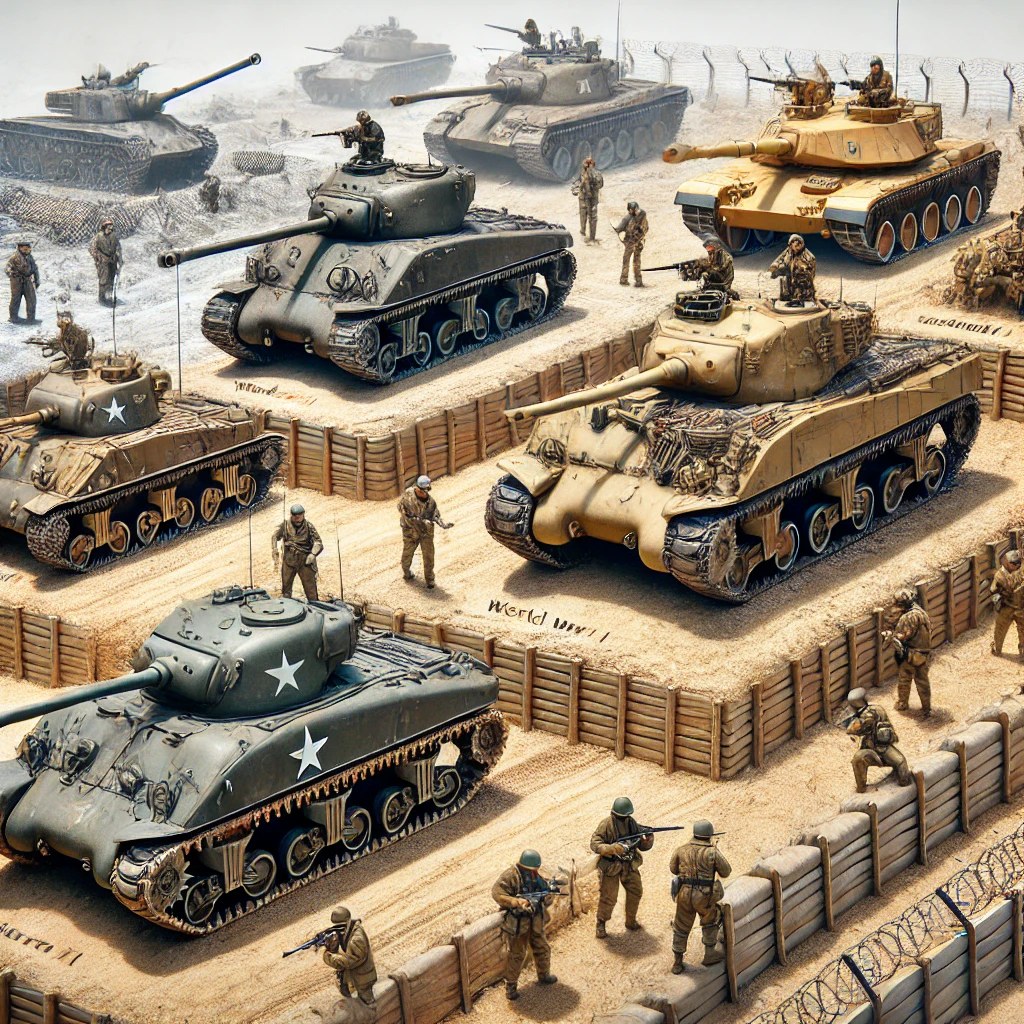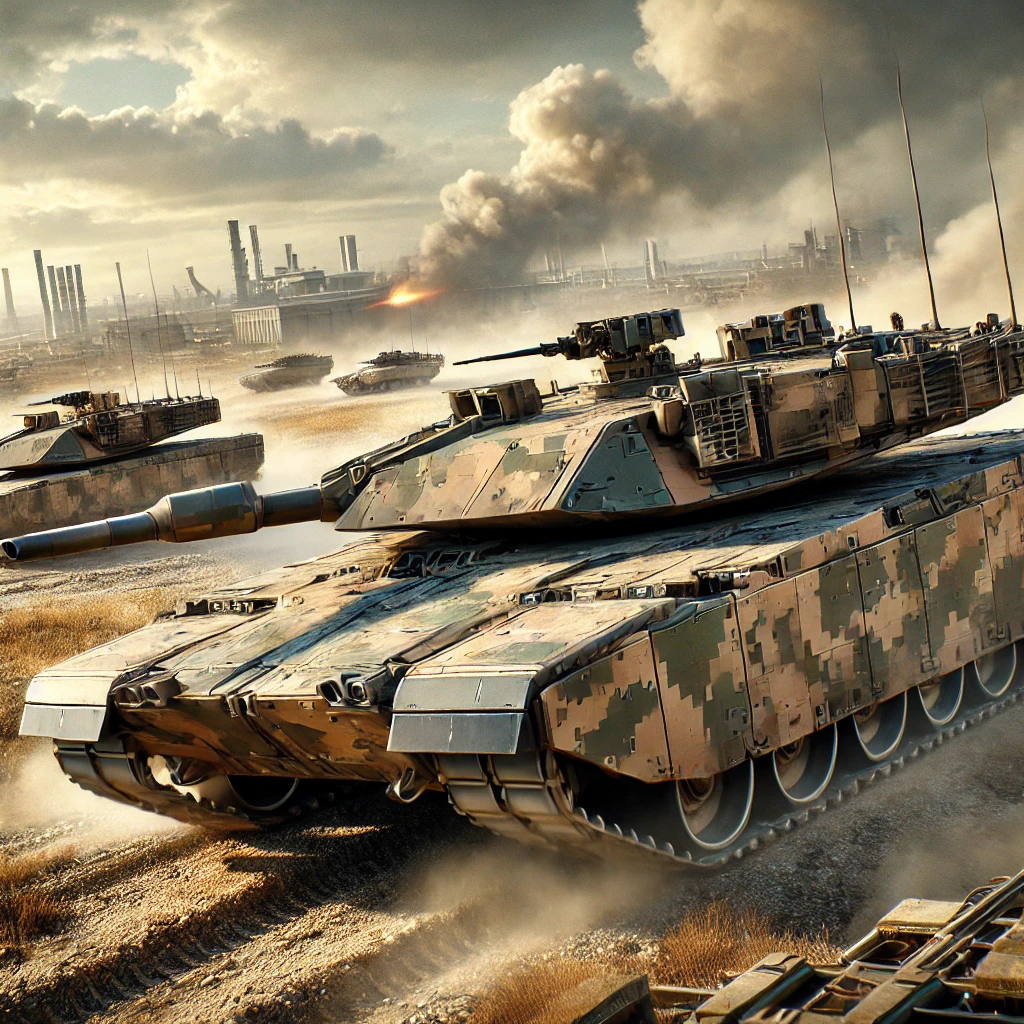When we think of tank warfare, the image of male soldiers in armoured vehicles may often come to mind. However, throughout history, women have played crucial roles in tank warfare, both on the battlefield and behind the scenes. From World War II to modern conflicts, women have served as tank commanders, drivers, and mechanics, breaking stereotypes and contributing to the success of military operations. This article explores the stories of these courageous women, their contributions to armoured warfare, and their ongoing fight for recognition in a traditionally male-dominated field.
Table of Contents
Women in Tank Warfare During World War II
During World War II, women’s involvement in tank warfare was primarily seen in the Soviet Union, where they played an active role on the front lines. The Soviet Red Army, facing immense pressure from Nazi Germany, called upon women to fill various military roles, including those in tank units. These women proved themselves to be formidable soldiers, showing incredible bravery and skill in some of the war’s most intense battles.
1. Mariya Vasilyevna Oktyabrskaya: The Tank-Driving Widow

One of the most famous women in tank warfare history is Mariya Vasilyevna Oktyabrskaya, a Soviet woman who became a tank driver and mechanic after her husband was killed in battle. Determined to avenge her husband’s death, she sold all her possessions to buy a tank for the Red Army, which she named “Fighting Girlfriend.” Her skills as a driver and mechanic were exceptional, and she was known for leading her tank into dangerous situations, destroying enemy positions.

In 1944, Oktyabrskaya was awarded the prestigious title of Hero of the Soviet Union for her bravery and significant contributions to the war effort. She died of wounds sustained in battle, but her legacy as a trailblazer in tank warfare lives on.
The Soviet Union’s All-Female Tank Crews
The Soviet Union was one of the few nations during World War II to actively involve women in combat roles, including in tank units. These women served as tank drivers, gunners, and commanders, taking part in key operations on the Eastern Front.
2. Aleksandra Samusenko: Soviet Tank Commander

Aleksandra Samusenko is another iconic figure from the Soviet Union’s tank forces. She was the only female Soviet tank commander during the war, rising through the ranks to become a Lieutenant. Samusenko commanded a T-34 tank and fought in several pivotal battles, including the Battle of Kursk, one of the largest tank battles in history.

Her leadership and tactical abilities earned her widespread respect among her male peers. Tragically, she died from wounds sustained during the war in 1945, but her contributions remain a symbol of women’s potential in armoured warfare.
Women’s Role Behind the Lines

While Soviet women were actively involved on the front lines, women in other countries contributed to tank warfare in different ways. Many women worked behind the scenes as engineers, mechanics, and factory workers, assembling and repairing tanks essential to military efforts.
3. British Women and Tank Production During World War II
In the United Kingdom, women contributed significantly to tank warfare, but their roles were primarily in production and support rather than direct combat. Women in auxiliary services, such as the Women’s Auxiliary Territorial Service (ATS) and factory workers at companies like Vickers-Armstrong helped to assemble tanks. Notably, many British women worked on tanks provided through the Lend-Lease programme, including the American-made Sherman M4.
While the Sherman M4 was manufactured in the United States, it was extensively used by British forces. Women in the UK played a critical role in maintaining, repairing, and preparing these tanks for battle. Their work behind the scenes ensured that the tanks were operational along the front lines, making them an essential part of the war effort.
Post-War and Cold War Period: Shifting Roles
In the post-war years and throughout the Cold War, women’s involvement in tank warfare decreased, as many countries restricted combat roles to men. However, women continued to serve in various military capacities, particularly in support roles related to armoured vehicles. It wasn’t until the late 20th and early 21st centuries that women began to regain ground in combat roles, including in tank units.
Modern Women in Tank Warfare
As gender roles in the military have evolved, more women have entered tank warfare in modern armies. Today, women serve as tank commanders, gunners, and drivers in several countries, including the United States, Israel, and the United Kingdom. These women are breaking barriers, proving that they can handle the physical and mental demands of tank operations just as well as their male counterparts.
Lillian Polatchek: The First Female U.S. Marine Tank Officer

In 2017, Lillian Polatchek made history by becoming the first woman to serve as a tank officer in the United States Marine Corps. Polatchek graduated at the top of her class from the Army’s Armor Basic Officer Leaders Course at Fort Benning, Georgia, and went on to command a Marine tank platoon with the 2nd Tank Battalion at Camp Lejeune(
Polatchek’s achievement marked a significant milestone in the inclusion of women in U.S. armoured combat roles. Her success not only highlighted the changing attitudes within the military, but also set a precedent for future female tank commanders.
5. Israel’s Female Tank Commanders
In Israel, integrating women into tank units took a major step forward in 2017, when the IDF launched a pilot programme to train women as tank commanders. In 2018, the first four female tank commanders graduated, including Sgt. Charlotte Feld-Davidovici, and began serving in border defence missions(
While these women are not part of combat brigades that operate deep into enemy territory, their roles in defending Israel’s borders have been seen as a crucial step towards gender integration in the IDF.
The Future of Women in Tank Warfare
The inclusion of women in tank warfare continues to grow as militaries around the world recognise the value of diverse perspectives and skills in combat. Countries such as Canada, Norway, and Australia have also begun integrating women into their tank units, and the trend is expected to continue.
As technology advances and modern tanks become more sophisticated, the physical demands of operating a tank have shifted. While the job still requires strength and endurance, modern tanks are increasingly reliant on teamwork, communication, and technical skills—areas where women have proven to excel.
Unsung Heroes of Tank Warfare
The history of women in tank warfare is one of courage, determination, and resilience. From Soviet tank commanders in World War II to modern-day women serving in armoured units, these women have shattered stereotypes and proven that they belong on the battlefield. As the role of women in tank warfare continues to expand, their contributions will become an increasingly important part of military history, inspiring future generations of female soldiers to follow in their footsteps.
Women in tank warfare may have been overlooked in the past, but their legacy is undeniable. Whether commanding tanks in battle or working behind the scenes to keep armoured vehicles operational, these unsung heroes have left an indelible mark on the history of armoured warfare.






I had no idea about the significant roles women have played in tank battles throughout history. The stories of their bravery and contributions are truly inspiring. I was particularly impressed by how you highlighted their impact in both World Wars. I’m curious, what do you think has been the most significant change in how women are perceived in tank warfare roles over the years?
Thank you for your insightful comment! Over the years, the most significant change in how women are perceived in tank warfare roles has been the increasing recognition of their capabilities and contributions. While women played vital roles in tank operations during both World Wars, often in supporting or auxiliary roles, modern times have seen more women taking on direct combat and leadership positions in armoured units. The growing acceptance of women in these roles, supported by changing military policies, reflects a shift towards greater gender equality in the armed forces.
You would have never thought that when it comes to certain jobs it is a man’s world but women have shown that they have what it takes too to operate in a man’s world. Especially in today’s world women can be found in the military where they are helping to make a difference.
You’re absolutely right! Women have increasingly proven their capabilities in traditionally male-dominated fields, including the military. Today, women are playing key roles across all branches of the military, demonstrating leadership, technical expertise, and resilience. Their contributions, especially in combat and strategic roles, highlight how gender is no barrier to making a significant impact. It’s inspiring to see how they continue to break barriers and help shape a more inclusive military landscape.
This is a fascinating and empowering article about the crucial roles women have played in tank warfare throughout history! I’m impressed by the stories of bravery and skill shown by women like Mariya Vasilyevna Oktyabrskaya, Aleksandra Samusenko, and Lillian Polatchek, who broke stereotypes and contributed significantly to military operations. It’s also heartening to see how modern militaries are recognizing the value of diverse perspectives and skills in combat, leading to greater inclusion of women in tank units. The article’s emphasis on the unsung heroes of tank warfare is particularly important, as it highlights the need to acknowledge and celebrate the achievements of women in this field. Overall, this is a must-read for anyone interested in military history, gender equality, and the power of women in combat roles.
Thank you so much for your thoughtful comment! I’m glad the article resonated with you and shed light on the incredible contributions of women like Mariya Vasilyevna Oktyabrskaya, Aleksandra Samusenko, and Lillian Polatchek. Their bravery and skill have been vital in challenging stereotypes and making significant impacts in tank warfare. It’s inspiring to see modern militaries embrace diverse perspectives, and acknowledging these unsung heroes is essential for promoting gender equality in combat roles. I truly appreciate your reflections on this important aspect of military history!
Fantastic article! It’s incredible to see how women have played such vital roles in tank warfare throughout history. Mariya Oktyabrskaya’s story is truly inspiring—how did she inspire future generations of female tank operators? Also, the inclusion of women in modern tank warfare is a game-changer; what challenges do they still face today? Lastly, which era do you think marked the most significant turning point for women in this field?
Thanks for sharing such valuable content!
GJ
Thank you for your thoughtful comment! Mariya Oktyabrskaya’s story, where she fought fiercely to avenge her husband’s death by commanding her own tank, served as a powerful symbol of women’s determination and strength in warfare. Her bravery continues to inspire future generations of female tank operators, showing that women can excel in traditionally male-dominated roles.
Today, women still face challenges like overcoming lingering gender biases and proving physical capability in tank units. The most significant turning point likely came during WWII, when women took more active roles in combat, paving the way for modern inclusion.
Thanks again for your great questions, GJ!
Cool article! I really enjoyed learning more about women in tank warfare. It’s inspiring to see how women have taken on such challenging and historically restricted roles. This kind of history truly shows that women are capable of anything. Thank you for sharing this valuable content and shedding light on these incredible stories!
Thank you for your thoughtful comment! It’s truly inspiring to see how women have overcome historical restrictions and taken on such challenging roles in tank warfare. Their resilience and capability demonstrate that there are no limits to what women can achieve, even in traditionally male-dominated fields. I’m glad you enjoyed the stories and found the content valuable—these remarkable women deserve to have their contributions recognised and celebrated!